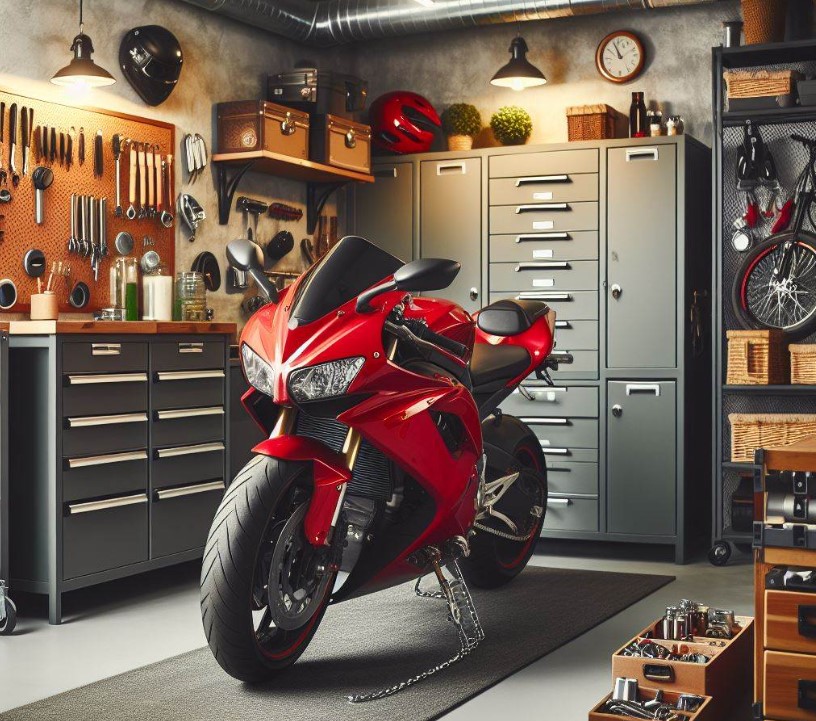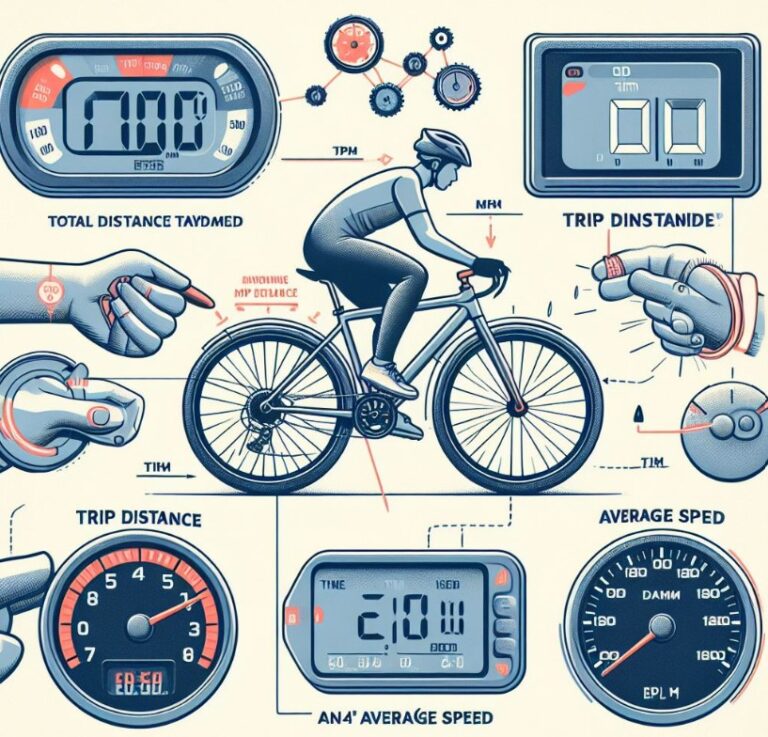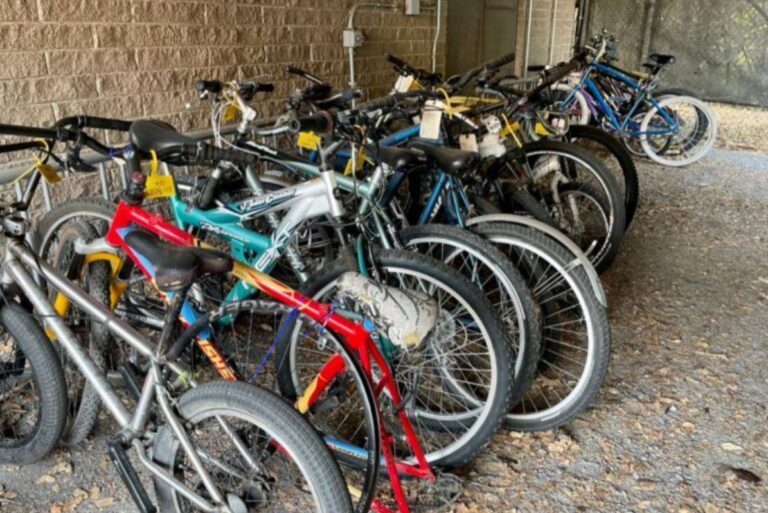How To Store Your Motorcycle? A Complete Breakdown
Storing your motorcycle properly is crucial for maintaining its performance, longevity, and safety. Understanding the correct procedures and conditions for storage can prevent mechanical issues and ensure that your bike is ready to ride when you are. This article provides an in-depth guide on How To Store Your Motorcycle? effectively, covering essential steps and considerations.
Key Takeaways
- Prepare your motorcycle for storage by cleaning and inspecting all parts.
- Use a breathable cover and store it in a dry, temperature-controlled environment.
- Maintain the battery life with a trickle charger and elevate the tires to avoid flat spots.
- Check fluids and consider using a fuel stabilizer to prevent corrosion.
- Inspect and lubricate the chain to ensure flexibility and protection against rust.
How To Store Your Motorcycle? Proper Motorcycle Storage Techniques
Storing your motorcycle in the right way is essential for keeping it in excellent condition. The process involves several key steps: cleaning your bike thoroughly, changing the oil, and choosing an ideal location for storage. It’s important to ensure that your motorcycle is stored in a clean, dry place to prevent rust and other damage.
When preparing your motorcycle for storage, attention to detail can make all the difference. Begin by giving your bike a thorough wash to remove any dirt, grime, or corrosive substances. This not only preserves the paint and metal but also allows you to inspect the motorcycle for any issues that may need addressing before storage.

Ideal Storage Conditions
The environment in which you store your motorcycle can significantly impact its condition. Optimal storage conditions include a dry, cool space, away from direct sunlight and extreme temperatures. Humidity can cause rust and corrosion, so a dehumidified space is preferable.
If possible, store your motorcycle indoors, such as in a garage or storage unit. This protects it from the elements and reduces the risk of theft or vandalism. If indoor storage is not an option, choose a high-quality, breathable motorcycle cover to shield your bike from weather-related damage.
Battery Maintenance
One of the most common issues motorcycle owners face after storage is a dead battery. To avoid this, disconnect the battery and connect it to a trickle charger. This maintains the battery’s charge level without overcharging, ensuring that your motorcycle is ready to start when you are.
Regular battery checks are crucial during extended storage periods. Ensure the battery terminals are clean and corrosion-free. If you’re storing your motorcycle for a long time, consider removing the battery and storing it in a cool, dry place.
Fuel System Care
Proper care of the motorcycle’s fuel system is vital for long-term storage. Fill the tank with fresh fuel and add a fuel stabilizer to prevent the fuel from deteriorating and causing damage to the engine. This also helps to prevent moisture from accumulating inside the tank, which can lead to rust.
After adding the stabilizer, run the engine for a few minutes to ensure the treated fuel circulates through the system. This step is crucial for maintaining the health of your motorcycle’s engine and ensuring a smooth start-up when you’re ready to ride again.
Tire Preservation
Tires are another critical component to consider when storing your motorcycle. Prolonged storage can lead to flat spots and tire degradation. To prevent this, elevate the motorcycle using stands to take the weight off the tires.
Check the tire pressure and inflate the tires to the recommended level before storing. This helps maintain the shape and integrity of the tires, ensuring they are road-ready when you take your motorcycle out of storage.
Should I Store My Motorcycle With A Full Tank Of Gas?
Storing your motorcycle with a full tank of gas is highly recommended, especially if you plan to store it for an extended period. A full tank prevents moisture from accumulating inside the fuel tank and stops the formation of rust.

Moisture in an empty or partially filled tank can lead to corrosion and can cause significant damage to the fuel system. Additionally, adding a fuel stabilizer before storage can further protect the engine and fuel system by preventing the fuel from degrading and oxidizing.
After adding the stabilizer, run the motorcycle for a few minutes to ensure the mixture spreads throughout the entire fuel system. This practice keeps the fuel fresh and helps avoid engine starting problems when you take the motorcycle out of storage.
How Should Motorcycles Be Stored?
Motorcycles should be stored in a clean, dry, and secure environment to protect them from weather elements, dust, and potential damage. The ideal storage procedure involves several key steps:
- Clean the Motorcycle: Wash off dirt, grime, and salt. Dry it thoroughly to prevent rust and corrosion.
- Change the Oil and Filter: Fresh oil prevents internal engine corrosion.
- Fill the Tank and Add Fuel Stabilizer: This prevents moisture accumulation and fuel degradation.
- Battery Maintenance: Disconnect the battery and connect it to a trickle charger to keep it charged.
- Elevate the Tires: Use stands to prevent flat spots and maintain tire shape.
- Cover the Motorcycle: Use a breathable, quality cover to protect from dust and scratches.

Remember to periodically check on the motorcycle, ensuring the battery remains charged and the cover stays in place.
How Do You Store Your Motorcycle If You Don’t Have A Garage?
Storing a motorcycle without a garage requires creativity to protect it from theft, weather, and damage:
- Use a High-Quality Motorcycle Cover: Invest in a waterproof, breathable cover to shield your motorcycle from rain, UV rays, and dirt.
- Find a Sheltered Area: Store your motorcycle under a carport, shed, or other structures that can offer some protection from the elements.
- Security: Use locks, chains, and a motorcycle alarm system to secure your bike against theft.
- Moisture Control: Place moisture absorbers or silica packets under the cover to keep the bike dry and prevent rust.
- Battery Maintenance: Remove the battery and store it in a cool, dry place, preferably connected to a trickle charger.
- Regular Checks: Regularly check on your motorcycle to ensure the cover is secure and to assess any potential moisture or security issues.
While these steps won’t provide the same level of protection as a garage, they can significantly mitigate risks associated with outdoor storage.
Conclusion
Storing your motorcycle properly is an integral part of motorcycle maintenance. It requires careful preparation and attention to detail but pays off by extending the life and performance of your bike.
Remember to clean and inspect your motorcycle, choose an appropriate storage location, and take steps to maintain the battery, fuel system, and tires.
By following these guidelines, your motorcycle will remain in top condition, ready for your next adventure. Embrace these storage practices to ensure your bike stays safe, secure, and in excellent running order.
People Also Ask
How can I protect my motorcycle from rust during storage?
To protect your motorcycle from rust, clean and dry it thoroughly before storage. Apply a coat of wax to painted surfaces and use a corrosion inhibitor on metal parts. Store your motorcycle in a dry environment and use a breathable cover to prevent moisture accumulation.
Do I need to drain my motorcycle’s fluids before storage?
Generally, you should not need to drain all your motorcycle’s fluids before storage. However, it is crucial to change the oil and, depending on the length of storage and type of coolant, consider changing the coolant. Always consult your motorcycle’s manual for specific advice.
What is the best location to store my motorcycle?
The ideal location for storing your motorcycle is a dry, cool, and well-ventilated area away from direct sunlight, such as a garage or storage unit. This helps protect your bike from the elements, temperature fluctuations, and theft.
What should I do about the fuel in my motorcycle when storing it?
Fill the fuel tank to prevent moisture from accumulating and causing rust. Add a fuel stabilizer to prevent the fuel from degrading and oxidizing, which can damage the engine and fuel system. Run the engine for several minutes to distribute the stabilized fuel throughout the system.

Welcome to the exhilarating world of Matt Rex, a professional car racer turned renowned vehicle enthusiast. Immerse yourself in his captivating blog as he shares heart-pounding adventures, expert reviews, and valuable insights on cars, trucks, jets, and more. Fuel your passion for speed and discover the beauty of vehicles through Matt’s engaging stories and meticulous expertise. Join the ever-growing community of enthusiasts who find inspiration and expert advice in Matt Rex’s blog—a digital hub where the thrill of speed meets the pursuit of knowledge.



![How Fast Does A 70CC Pit Bike Go? [Answered]](https://www.turbochaos.com/wp-content/uploads/2024/02/How-Fast-Does-A-70CC-Pit-Bike-Go-768x698.jpg)



